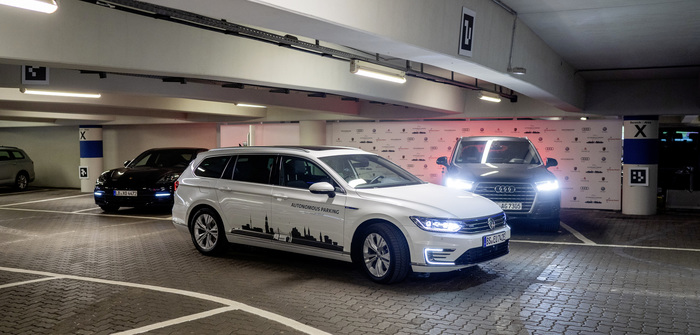The Volkswagen Group is currently testing autonomous parking at Hamburg Airport in Germany. Using a map of the multi-storey car park, an array of sensors and a number of markers throughout the car park, cars can find a space autonomously, decide whether charging is necessary, and show up at the exit when the driver is ready to leave.
The company plans to roll out the function in stages. In the first stage it will be possible to use autonomous parking in selected multi-storey car parks, in an exclusive traffic flow in separate areas that are not accessible to people. Before that, however, the autonomous parking system is being extensively tested: thousands of parking procedures are being performed and analysed in different places around the world. At the same time, the system is being verified through simulation.
The next stage will be operation in mixed traffic, where vehicles can park and move autonomously in the same areas of the car park as cars with drivers. The goal is to have vehicles parking autonomously in all car parks, including public open-air ones.
There are good reasons for gradually introducing autonomous driving functions, explained Johann Jungwirth, chief digital officer of the Volkswagen Group: “What we offer our customers works absolutely reliably and safely. This is what today’s technology for vehicles from the Volkswagen Group stands for, and we will continue to keep this promise also in the era of autonomous driving.”
The vehicles with the autonomous parking function will all be equipped with an active surroundings recognition system. This is able to recognise objects and react accordingly, be that by avoiding them, slowing down or stopping completely. The sensor set includes ultrasound, radar and cameras. The data is processed in a central control unit in the car, which then combines this data with map data and pictorial markers for orientation, so that it can drive to an empty parking space on its own.
Autonomously parking cars come with a number of additional benefits, which VW promotes under the Volkswagen We brand. One app, which has already been trialled in Berlin, is We Deliver, where users can have parcels delivered directly to their car. The vehicle’s position is given with the online order and the courier uses GPS data to pin down the location of the freely accessible parked car within a radius of 300m and is given one-time, secure access to the boot.
For electrified cars, the group has devised Porsche Park & Charge. The car will drive autonomously to a parking spot with a charger and then communicate with a charging robot, which will plug the charger into the automatically opened charging cap. When sufficiently charged, the car can then automatically move to a different space, freeing up the charging point for the next electric car.


